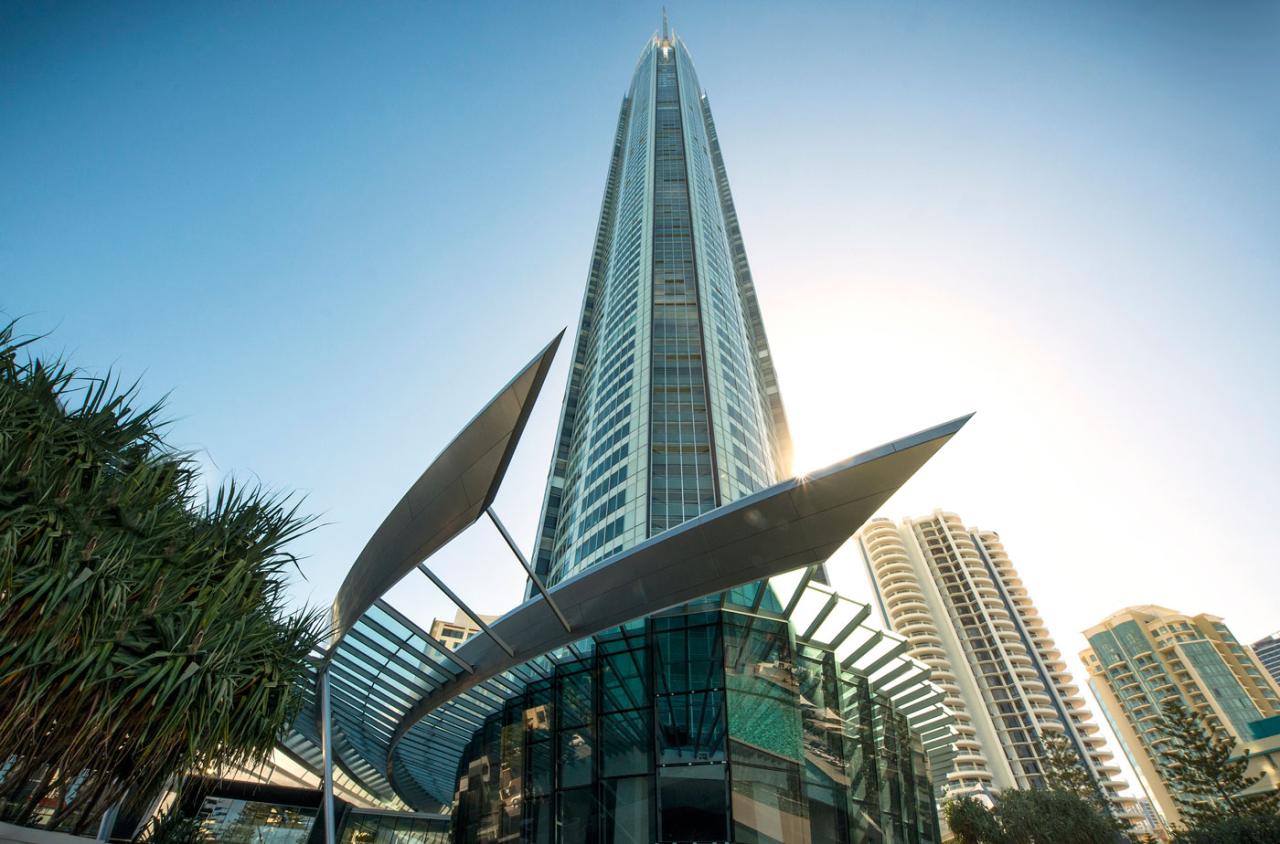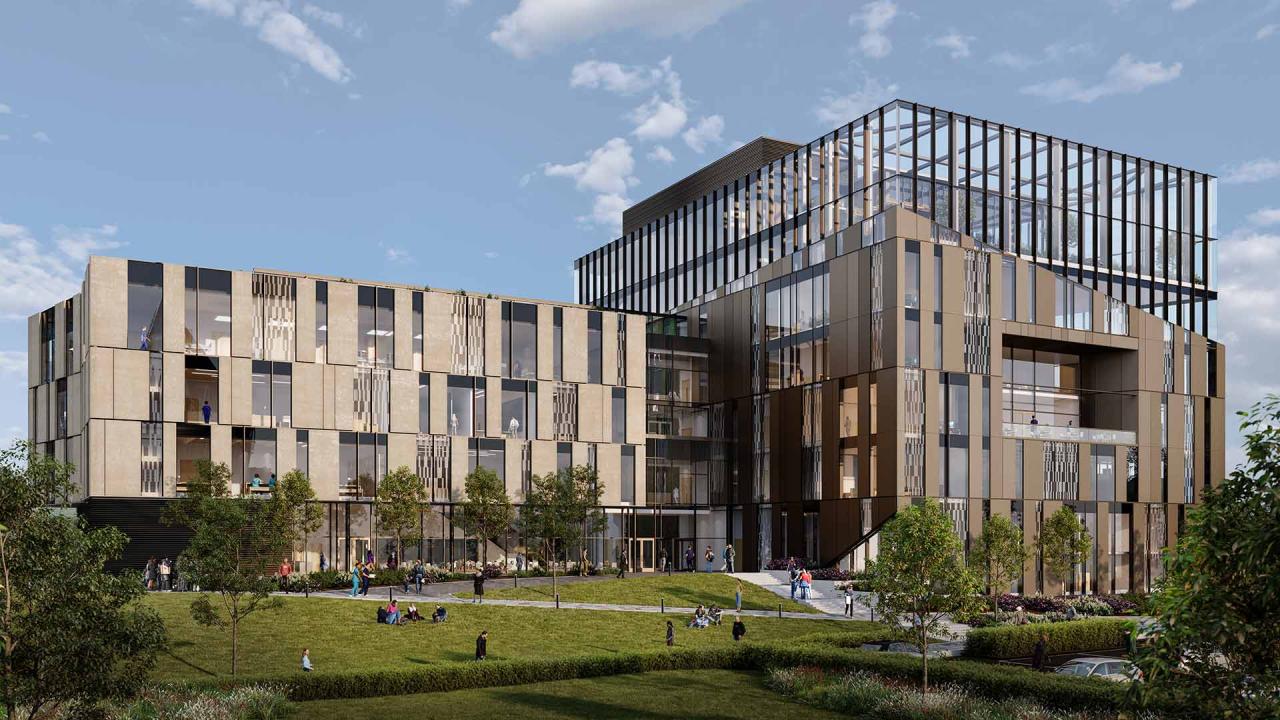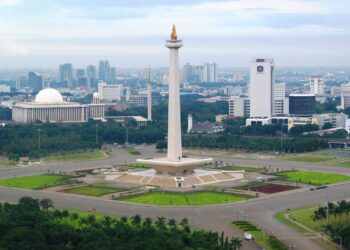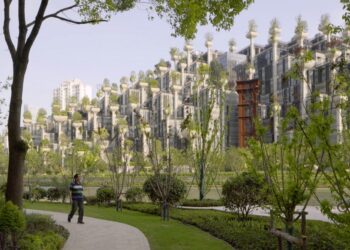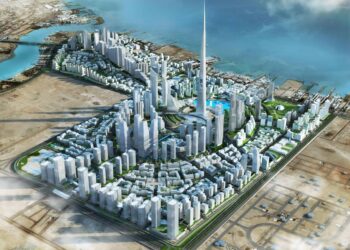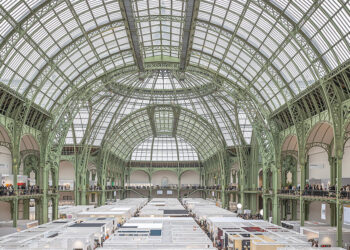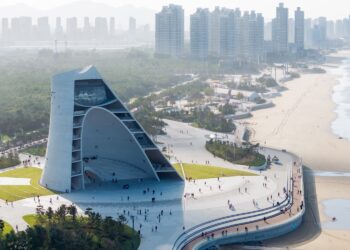In recent years, Australian architects have garnered significant international recognition for their innovative designs, sustainable practices, and integration of cultural narratives. This surge in global acclaim is a testament to Australia’s unique architectural approach, which harmoniously blends environmental consciousness with cultural sensitivity. This article delves into the factors contributing to this global recognition, highlighting notable projects, firms, and the overarching themes that define contemporary Australian architecture.
A. Embracing Sustainability and Innovation
1. Quay Quarter Tower: A Paradigm of Adaptive Reuse
The Quay Quarter Tower in Sydney stands as a beacon of sustainable architecture. Originally constructed in 1976 as the AMP Centre, the building underwent a transformative redevelopment between 2018 and 2021. The renovation retained 68% of the existing structure, making it the world’s first “upcycled” skyscraper. This innovative approach not only minimized environmental impact but also earned the tower the prestigious title of World Building of the Year at the 2022 World Architecture Festival.
2. Nightingale Village: Redefining Urban Living
Located in Melbourne, Nightingale Village exemplifies a fossil fuel-free housing model that prioritizes community living and environmental sustainability. The development comprises multiple residential buildings designed by different architects, fostering architectural diversity while adhering to shared sustainability principles. Features include shared rooftop gardens, rainwater harvesting systems, and energy-efficient designs, setting a new standard for urban residential developments.
B. Celebrating Cultural Identity
1. Integration of First Nations Culture
Australian architecture has increasingly embraced Indigenous perspectives, integrating cultural narratives into design processes. A notable example is the Darlington Public School in Sydney, designed by FJC Studio. The school’s design seamlessly incorporates First Nations culture, earning it the title of World Building of the Year at the World Architecture Festival.
2. The Creative Sphere at Venice Biennale
In 2025, Australia’s representation at the Venice Biennale of Architecture was led by The Creative Sphere, the country’s first all-Indigenous design team. Their project, “Home,” constructed from sustainable, locally sourced materials, offers a profound exploration of Indigenous perspectives on architecture and connection to Country. The structure comprises 139 hand-cast plaster panels and was assembled using natural techniques, highlighting community and cultural resilience.
C. Notable Australian Architectural Firms
1. Woods Bagot: Global Design Excellence
Founded in Adelaide, Woods Bagot has evolved into a global architectural and consulting practice with studios across five regions. The firm’s portfolio includes significant projects like the National Australia Bank in Melbourne Docklands and the Qatar Science & Technology Park in Doha. Their design philosophy emphasizes sustainability and innovation, evident in projects like the SAHMRI building in Adelaide, which features a “living skin” inspired by a pine cone for optimal passive solar performance.
2. Denton Corker Marshall: Sculptural Modernism
Denton Corker Marshall is renowned for its modernist and sculptural architectural style. Notable projects include the Melbourne Museum, with its distinctive “blade” roof section, and the Melbourne Exhibition Centre, featuring a roof resembling a giant aircraft wing. The firm’s international projects span over 20 cities in Asia, including the Australian embassies in Tokyo and Beijing.
3. Laboratory for Visionary Architecture (LAVA)
Established in 2007, LAVA combines digital workflows with nature’s structural principles to create sustainable and innovative designs. Their approach, termed “More with Less,” focuses on achieving more architecture with less material, energy, time, and cost. LAVA’s projects often draw inspiration from biomimetics, merging future technologies with natural patterns to build socially and environmentally responsible structures.
D. Recognition at International Platforms
1. World Architecture Festival (WAF) Accolades
Australian architects have consistently excelled at the World Architecture Festival. In 2023, eight Australian projects were among the prize winners. Conrad Gargett and Wardle’s collaboration on the Victorian Heart Hospital won in the Completed Buildings – Health category. TERROIR’s Resource Recovery Learning Centre was recognized in the Future Projects – Education category. Additionally, SJB received awards in the Residential (Single Dwelling) and Temporary/Meanwhile Use categories.
2. International Architecture Awards
In 2024, seven Australian projects were honored at the International Architecture Awards by The Chicago Athenaeum and the European Centre for Architecture. McGregor Coxall received two awards for Drying Green Park and the Grampians Peaks Trail Stage 2. FJC Studio’s Harrington Collection also received recognition in the Urban Planning/Landscape Architecture category.
E. Pioneering Architects
1. Glenn Murcutt: A Legacy of Environmental Sensitivity
Glenn Murcutt, the sole Australian recipient of the Pritzker Architecture Prize, is celebrated for his environmentally sensitive designs. His notable works include the Marie Short House and the Australian Islamic Centre. Murcutt’s philosophy emphasizes simplicity and harmony with the environment, often working as a sole practitioner without staff and focusing exclusively on Australian projects.
2. Peter Stutchbury: Merging Architecture with Nature
Peter Stutchbury is renowned for his unique approach to architecture, driven by a deep connection to nature. Awarded the Australian Institute of Architects’ gold medal in 2015, Stutchbury’s designs merge seamlessly with their surrounding landscapes, emphasizing sustainability and respect for the environment.
F. Educational and Cultural Contributions
1. Victorian Heart Hospital: A Model of Healthcare Design
The Victorian Heart Hospital, a collaboration between Conrad Gargett and Wardle, exemplifies excellence in healthcare architecture. The facility’s design focuses on patient-centered care, integrating natural light, green spaces, and intuitive layouts to enhance healing environments. Its recognition at the World Architecture Festival underscores Australia’s leadership in healthcare design.
2. Melbourne Holocaust Museum: Preserving History Through Architecture
Kerstin Thompson Architects’ design for the Melbourne Holocaust Museum has been lauded for its sensitive and impactful approach. The project received multiple accolades, including the AIA National Awards for Public Architecture and the Victorian Premier’s Design Awards. The museum serves as a poignant reminder of history, utilizing architecture to foster reflection and education.
Conclusion
Australian architecture has firmly established itself on the global stage, characterized by a commitment to sustainability, cultural integration, and innovative design. Through the efforts of visionary architects and firms, Australia continues to influence and inspire the international architectural community. As the nation addresses contemporary challenges and embraces its rich cultural heritage, its architectural landscape is poised for continued global recognition and impact.


